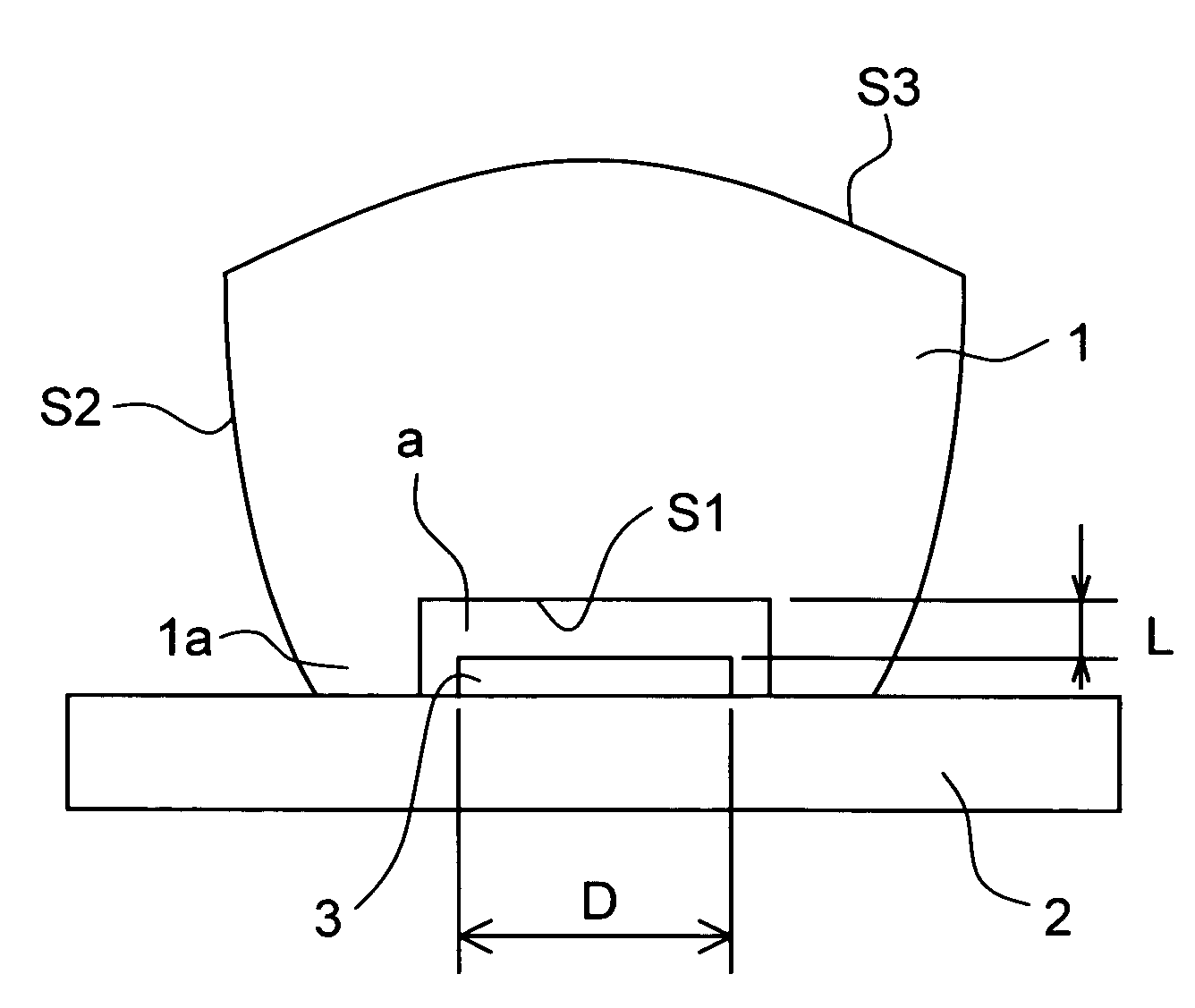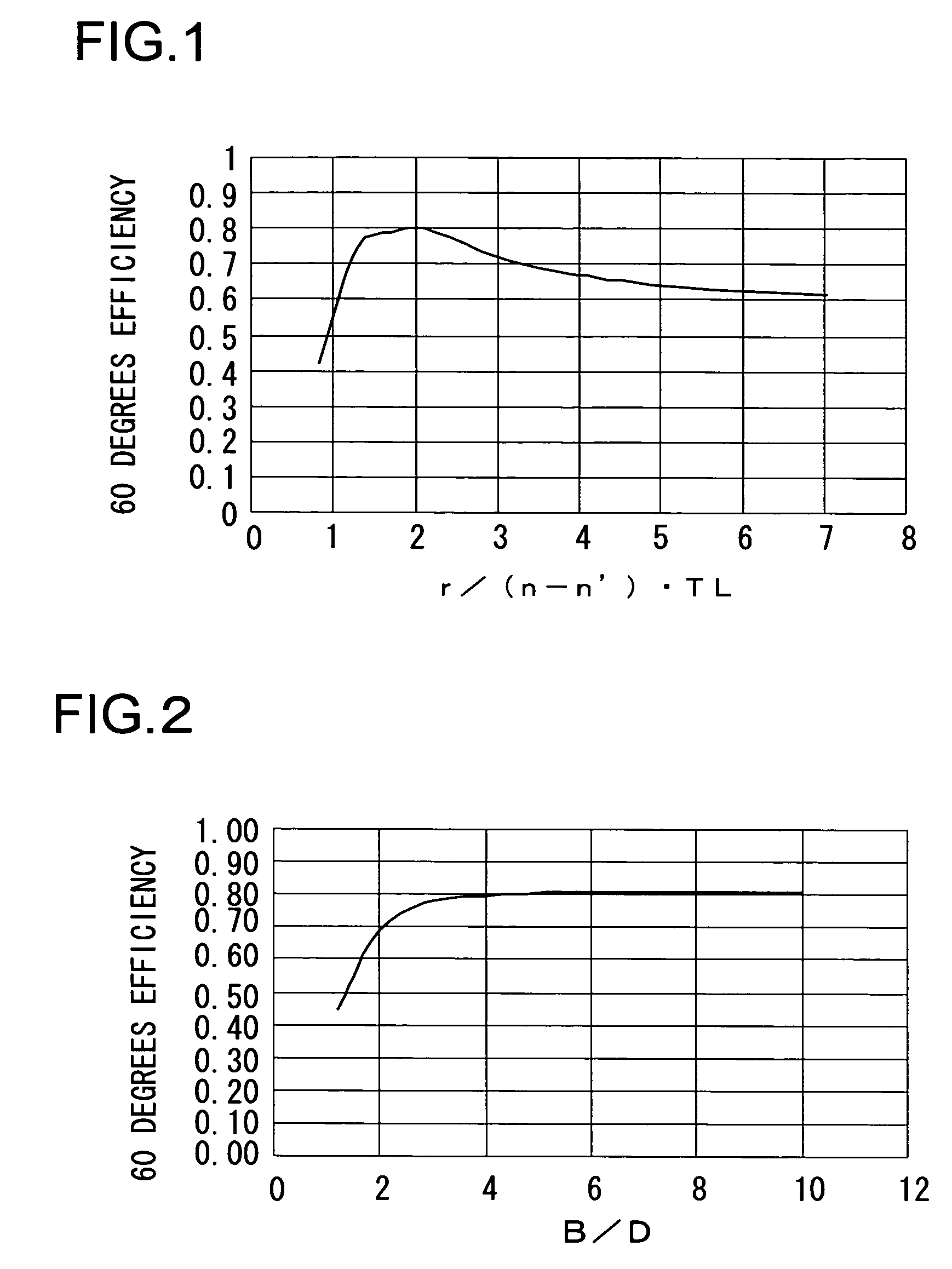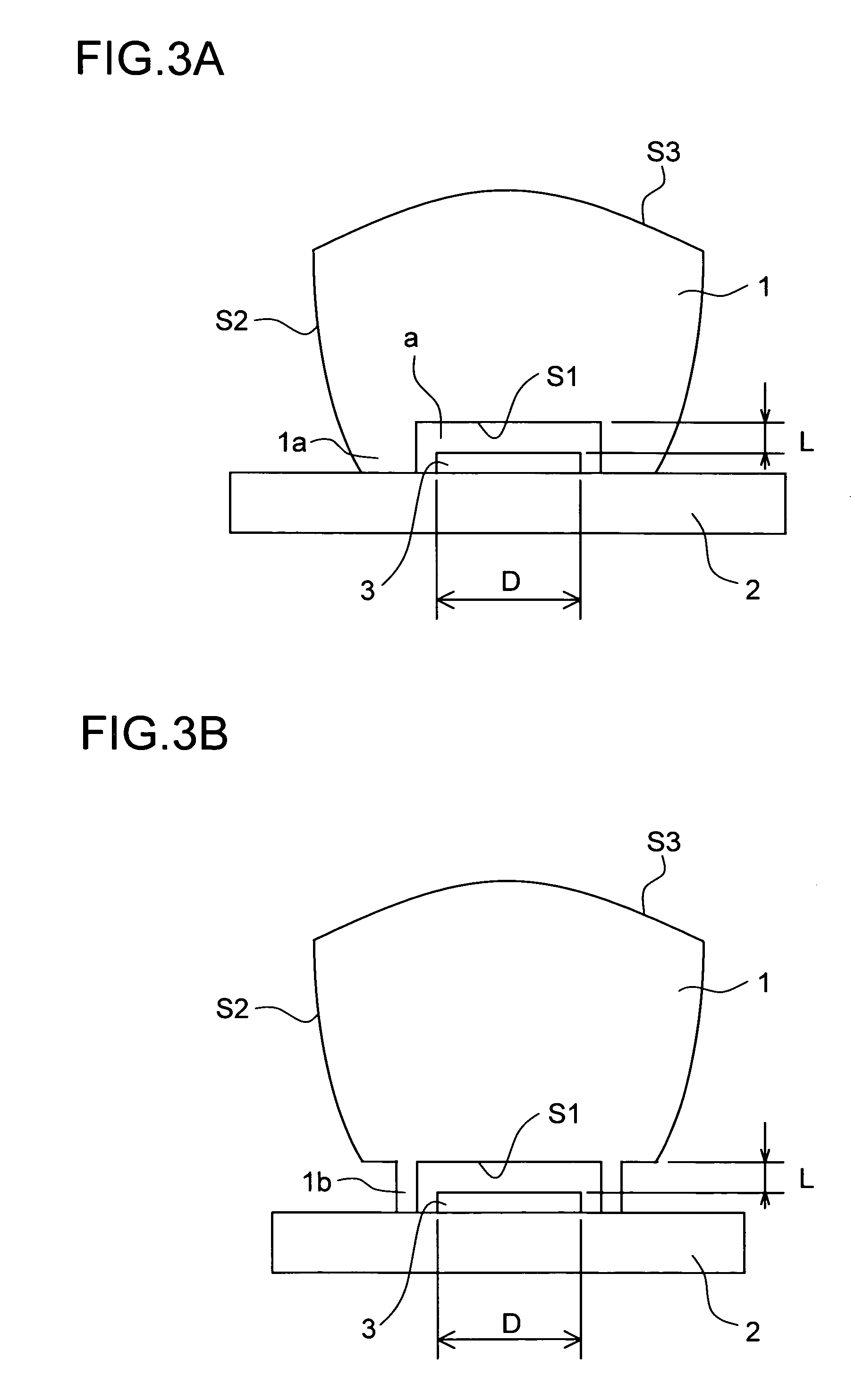Optical element and lighting device provided therewith
a technology of optical elements and lighting devices, which is applied in the direction of lighting and heating apparatus, printing, instruments, etc., can solve the problems of impracticality very large lens size, large lens size, complicated configuration, etc., and achieves simple configuration, low cost, and efficient condensation
- Summary
- Abstract
- Description
- Claims
- Application Information
AI Technical Summary
Benefits of technology
Problems solved by technology
Method used
Image
Examples
first embodiment
[0083]Hereinafter, one embodiment of the present invention will be described with reference to the accompanying drawings. The invention refers to an optical element which condenses in a predetermined direction light emitted from a light source having a widening surface form. This optical element has a first surface, a second surface, and a third surface. The first surface is an entrance surface formed of a flat surface where light emitted from the light source enters. The third surface is an exit surface from which light entering via the first surface exits and which is so formed as to be convexed on the light exit side. The second surface is a reflection surface which directs, to the third surface by total reflection, part of light entering via the first surface and which is so formed as to be convexed on the light entrance side. With the first surface disposed near the light source, light exiting from the light source enters the first surface, is totally reflected by the convexed ...
example 1
[0153]
Material: PMMARefractive index (d-line): 1.4914νd: 57.82[Effective[Z (mm)][CR (mm)][k]diameter (mm)]Light source (3)0INF0.0010First surface (S1)0.03INF0.0010Second surface (S2)−3.0954−1.0030surface apexThird surface (S3)29.03−500.0030surface apex
example 2
[0154]
Material: PolycarbonateRefractive index (d-line): 1.5834νd: 30.23[Effective[Z (mm)][CR (mm)][k]diameter (mm)]Light source (3)0INF0.0010First surface (S1)0.5INF0.0010Second surface (S2)−2.6254−1.0030surface apexThird surface (S3)29.5−400.0030surface apex
PUM
 Login to View More
Login to View More Abstract
Description
Claims
Application Information
 Login to View More
Login to View More - R&D
- Intellectual Property
- Life Sciences
- Materials
- Tech Scout
- Unparalleled Data Quality
- Higher Quality Content
- 60% Fewer Hallucinations
Browse by: Latest US Patents, China's latest patents, Technical Efficacy Thesaurus, Application Domain, Technology Topic, Popular Technical Reports.
© 2025 PatSnap. All rights reserved.Legal|Privacy policy|Modern Slavery Act Transparency Statement|Sitemap|About US| Contact US: help@patsnap.com



